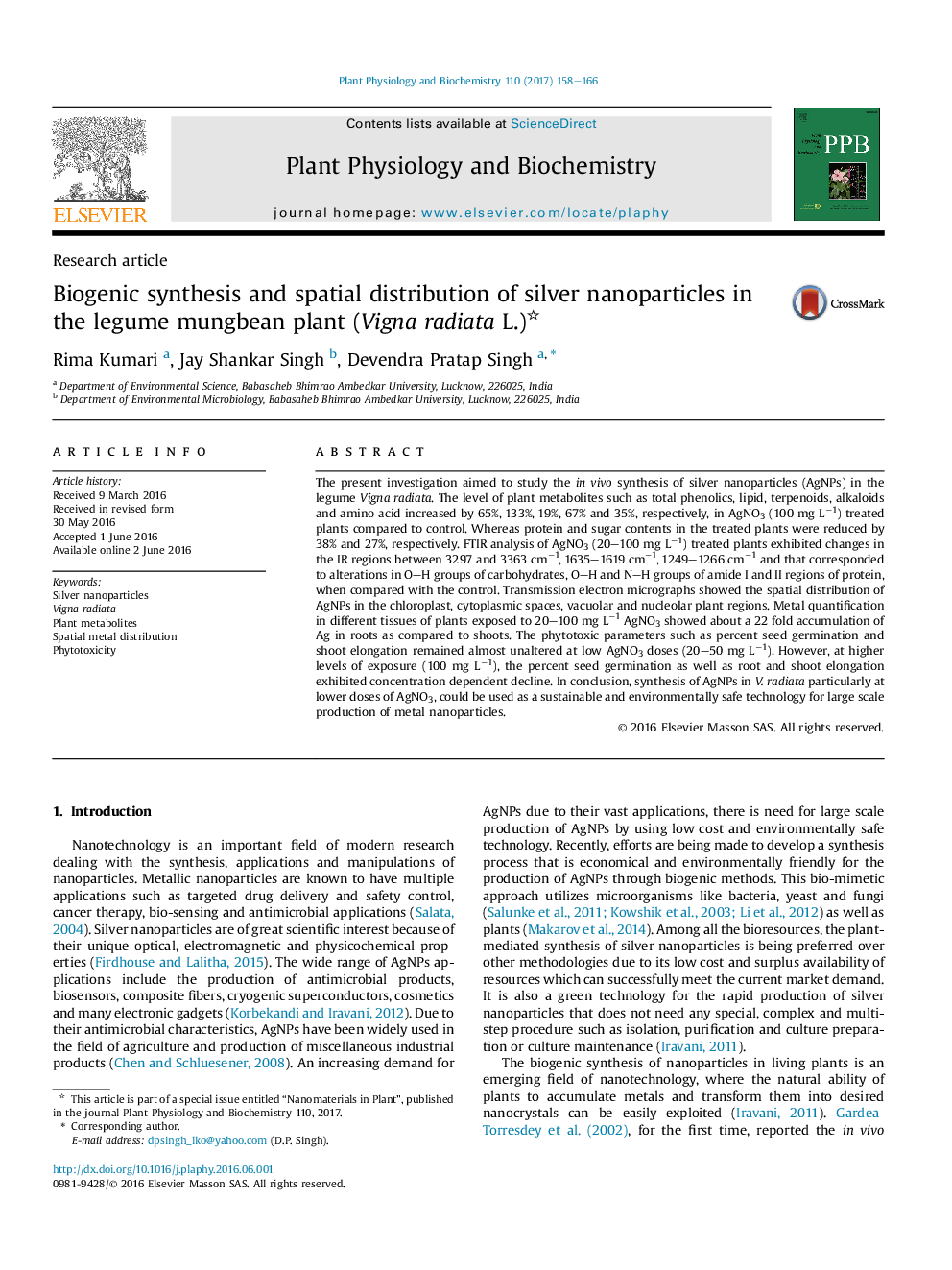| Article ID | Journal | Published Year | Pages | File Type |
|---|---|---|---|---|
| 5515337 | Plant Physiology and Biochemistry | 2017 | 9 Pages |
â¢Phytoremediation of silver in Vigna radiata has been described.â¢Plant resources may be used for phytomining of toxic metals.â¢Plant metabolites contribute in synthesis of silver nanoparticles.â¢V. radiata metabolic response indicates silver metal sensitivity.
The present investigation aimed to study the in vivo synthesis of silver nanoparticles (AgNPs) in the legume Vigna radiata. The level of plant metabolites such as total phenolics, lipid, terpenoids, alkaloids and amino acid increased by 65%, 133%, 19%, 67% and 35%, respectively, in AgNO3 (100 mg Lâ1) treated plants compared to control. Whereas protein and sugar contents in the treated plants were reduced by 38% and 27%, respectively. FTIR analysis of AgNO3 (20-100 mg Lâ1) treated plants exhibited changes in the IR regions between 3297 and 3363 cmâ1, 1635-1619 cmâ1, 1249-1266 cmâ1 and that corresponded to alterations in OH groups of carbohydrates, OH and NH groups of amide I and II regions of protein, when compared with the control. Transmission electron micrographs showed the spatial distribution of AgNPs in the chloroplast, cytoplasmic spaces, vacuolar and nucleolar plant regions. Metal quantification in different tissues of plants exposed to 20-100 mg Lâ1 AgNO3 showed about a 22 fold accumulation of Ag in roots as compared to shoots. The phytotoxic parameters such as percent seed germination and shoot elongation remained almost unaltered at low AgNO3 doses (20-50 mg Lâ1). However, at higher levels of exposure (100 mg Lâ1), the percent seed germination as well as root and shoot elongation exhibited concentration dependent decline. In conclusion, synthesis of AgNPs in V. radiata particularly at lower doses of AgNO3, could be used as a sustainable and environmentally safe technology for large scale production of metal nanoparticles.
